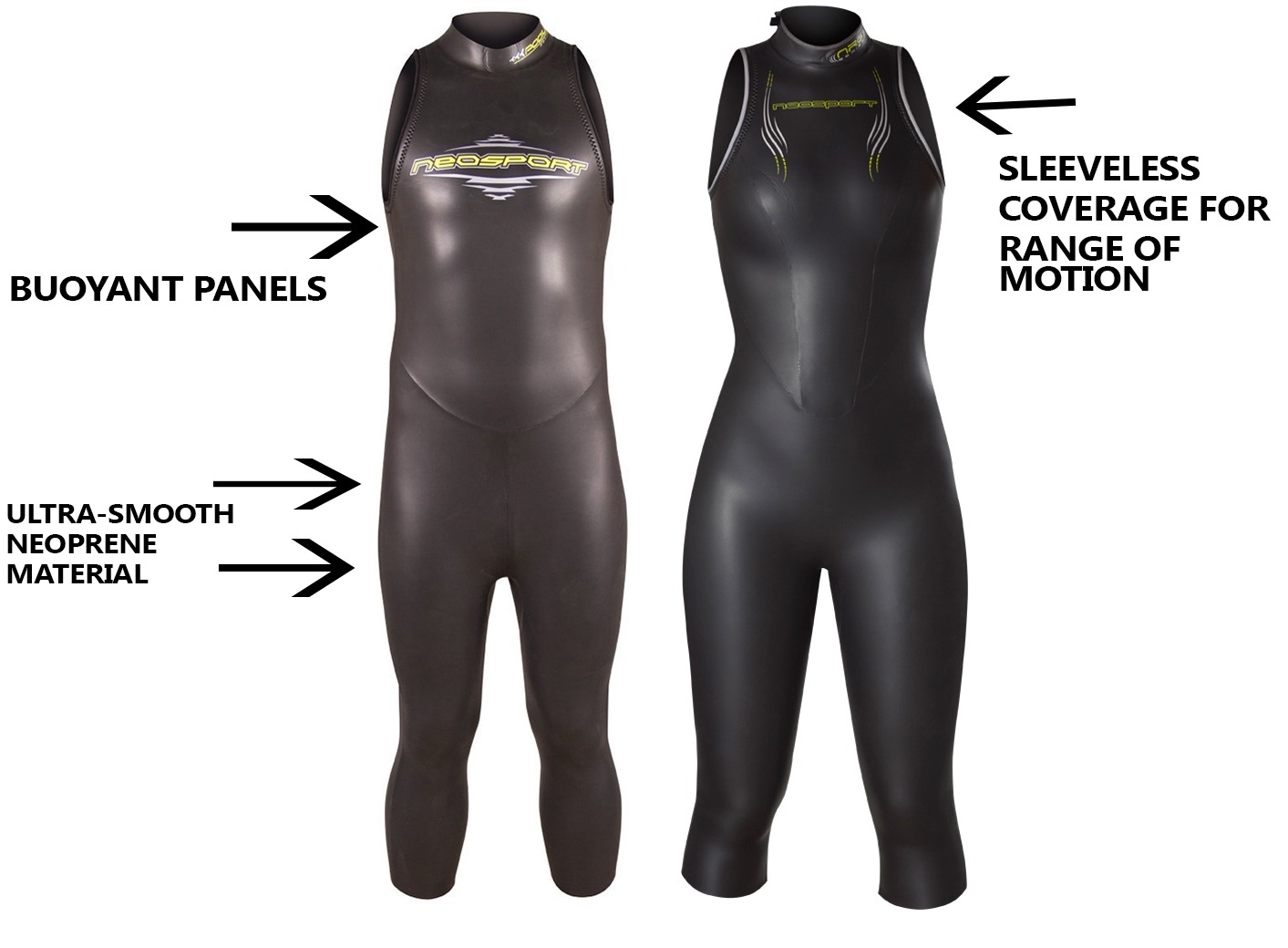What Is a Triathlon Wetsuit?
Jennifer Sisson May 10th, 2019 Posted In: Articles Tags: Triathlon
What Is a Triathlon Wetsuit? How Do You Choose One?
If you are new to triathlons, you may wonder, “What is a triathlon wetsuit? How do I choose a suit that is right for me?” This guide will explain what a triathlon wetsuit is and how to find one that meets your needs.
What Is a Triathlon Wetsuit?
The triathlon wetsuit serves three main functions: it keeps the triathlete warm, buoyant, and streamlined.
Warmth
Triathlon suits are thick enough to keep swimmers warm, but thin enough to be flexible. Wetsuits trap a thin layer of water next to the skin, insulating against the colder water outside. Open water events sanctioned by USA Triathlons permit athletes to wear wetsuits if the water is below 79 degrees. (Be sure to check individual race rules regarding water temperatures and wetsuits, especially if you are looking for a podium finish.)
Coverage is the greatest determining factor of how warm a wetsuit is. Sleeveless triathlon wetsuits are better for warmer waters, and allow the bonus of a fuller range of motion for arms and legs. Full triathlon wetsuits will keep you warm in most swimming conditions. Greater coverage also acts as a barrier between you and rocks, seaweed, and aquatic wildlife. However, they do not offer the same freedom for your stroke that sleeveless tri suits do.
Buoyancy
Triathlon wetsuits are made with neoprene panels, which help you float. Typically added to the torso and thighs, these panels lift the heaviest portions of the body to keep the swimmer in a flat, neutral position in the water. The less energy you spend keeping your body in an optimal swimming position, the more you can expend propelling yourself forward, decreasing your time. The buoyancy a suit has depends upon its thickness and quality, but many budget-friendly suits offer the buoyancy benefits of neoprene panels. Premium suits offer 5mm thickness in the torso and upper legs and taper down to 1mm at the extremities, maximizing warmth, buoyancy, and flexibility.
Hydrodynamics
Because triathlon wetsuits are made of ultra-smooth neoprene and rubber, an added benefit of racing in a wetsuit is a better hydrodynamic profile. This reduces friction and allows you to glide through the water.
How Are Triathlon Wetsuits Different from Other Wetsuits?
Wetsuits for diving or surfing may look similar to triathlon suits, but there are a few key differences. Triathlon wetsuits only go up to 5mm thick; thicker wetsuits are prohibited in USA Triathlon-sanctioned events. Other wetsuits do not offer the buoyancy of neoprene panels, which is a major advantage of triathlon suits. Triathlon wetsuits are also designed for easy removal; this is essential for smooth and quick transitions.
How Do I Choose Which Triathlon Wetsuit Is Right for Me?
Choosing the right suit doesn’t have to be difficult. Consider these factors when selecting the right suit for your body and budget:
Coverage: Triathlon wetsuits come in various sleeve lengths. If you race in warm waters and enjoy a full range of motion for paddling, look for a sleeveless long john/long jane suit. For races in cold or unpredictable conditions, choose a full-coverage suit.
Fit: Your triathlon suit should fit comfortably – not so tight that it feels constricting, but not so loose that you risk chaffing. Loose wetsuits also allow extra water to flow in, which slows down your race time. When trying on wetsuits, move your arms and legs around to ensure you choose a suit that is flexible but snug. It should fit like a second skin – not constricting and allowing you to move and breathe easily.
Buoyancy: We rank buoyancy on a scale of good, better, and superior. Higher-end suits will have maximum buoyancy, but you can still find a wallet-friendly suit that will give you some added lift in the water.
Price: For many racers, price is a major factor in choosing a wetsuit. If you are new to the sport or on a tight budget, you can still find a good-quality suit like the NeoSport SPRINT with features like super-stretch neoprene, buoyancy panels, and an easy-out zipper. If you are a veteran triathlete making an investment in a high-quality wetsuit, models like ones from the brand blueseventy, offer cutting-edge features, like reverse zippers, Yamamoto 40-cell neoprene, and anti-flush seals. Choose the highest quality suit that fits in your price range.
Need help? Reach out to us via chat, email (service@wetsuitwarehouse.com), or give us a call at 866-906-7848.



This is my first triathlon and it will be a sprint Distance
My greatest. I Vern is the wet suit for the swim. I am able to swim the 750 but will need to use breast stroke for rest periods. What type of wet suit donuu you in recommend.
That’s a nice and very informative article.